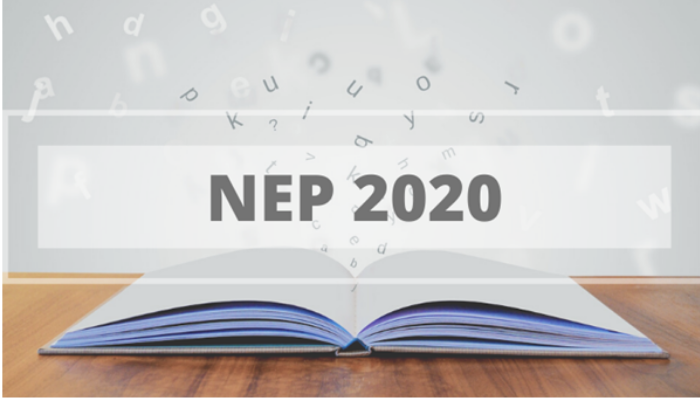What does the NEP 2020 mean for you?

On July 29, 2020, Mr. Ramesh Pokhriyal, Minister of the newly renamed Ministry of Education, released the New Education Policy 2020. This is the third Education policy of the country since independence and is a major step forward for the Indian education system as it brings a number of reforms in the existing curriculum that will bring about a positive change in the way children are educated in our country.
The vision and journey of NEP 2020
According to the MHRD (now renamed as Ministry of Education or MoE), The NEP 2020 aims to bring about an India-centred education system with a target to transform the way our future leaders are educated, and provide high-quality education to all.
As the first new education policy in 34 years, it has come about as a major change. The panel that submitted the first draft in 2018 was led by former ISRO chief, K. Kasturirangan. It was made public and open to feedback in May 2019.
Salient features of NEP 2020
NEP 2020 has brought about major reforms in the school education, examination policies, and higher education. Here is a crux of the alterations made by the government under the folds of this new policy:
School Education
- The first major and significant change is the shift from the 10+2 curriculum to the 5+3+3+4 structure of education. It will be divided as:
|
Level |
Class |
Age |
|
Foundational |
Pre-school (3 years) Class 1 and 2 (2 years) |
3-6 years (in ECCE*) 6-8 years |
|
Preparatory |
Classes 3 to 5 (3 years) |
8-11 years |
|
Middle |
Classes 6 to 8 (3 years) |
11-14 years |
|
Secondary |
Classes 9 to 12 (4 years) |
14-18 |
*Early Childhood Care & Education
- The medium of instruction will now be the home language/ mother-tongue/ local language up to class 5th (and beyond depending on the state and student’s choice)
- Report cards will involve comprehensive reporting on skills and capabilities and not just academic record.
- Students will also be encouraged to develop vocations of their choice, with 10 bag-less days, as a part of the ‘Lok-Vidya’ initiative. A National Committee for the Integration of Vocational Education (NCIVE) will be constituted under MoE.
- As a part of the vocational education encouragement, all separations between vocational, academic, curricular and extra-curricular will also be removed.
- Class 8th onwards, an option of choosing subjects will be provided.
School examinations
- Assessment of the students will shift to a formative style encouraging - higher-order thinking skills, critical thinking, and conceptual clarity. The State will take examinations at three levels - classes 3, 5, and 8. The Board examinations will continue, however, they will now assess holistic development, and not encourage rote learning.
- PARAKH - Performance Assessment, Review, and Analysis of Knowledge for Holistic Development will be established. This will be the national assessment body responsible for suggesting guidelines to assess students and evaluate them. All recognized school boards, including state boards, will come under this.
- The students will also be offered “high-quality aptitude tests” twice a year by the National Testing Agency (NTA) to prepare them for university entrance exams.
Higher education
- From the 2022 session, NTA will conduct a common college entrance exam twice a year.
- A multiple entry-exit provision will be added to higher education. This will imply that a Bachelor’s degree will be of 4 years with exit options in the first two years:
|
Exit after 1 year |
Certificate |
|
Exit after 2 years |
Diploma |
This implies that no year of a student enrolled in graduation will be wasted. Should a student decide to take a break in between, the credits earned for that particular year shall stay with them until they decide to resume.
- No rigid separation between arts and sciences - all Bachelor’s programmes will be multidisciplinary in nature, i.e., a major and a minor will be offered in graduation.
- UGC and AICTE will be merged. So far, no new body to replace the apex institutions in arts and sciences has been announced, but plans are being charted out for a single regulator of higher education.
- M.Phil will be discontinued, all Masters programs will become research-based.
- All higher education institutions such as IITs will become multidisciplinary by 2040. All technical institutions will be expected to open doors to arts and humanities students.
- Select foreign universities will be facilitated to open and operate branches on Indian soil.
Other major reforms
- Edutech will be encouraged - schools will be technically equipped, e-Content will be made available in the regional language, National Educational Technology Forum (NETF) will be established.
- Public investment in the Education Sector to reach up to 6% of GDP.
- The affiliation system will be phased out over the next 15 years.
- 100% Gross Enrollment Ratio in Pre-School to Secondary level by 2023.
- Aim to have every student in grade 5 and beyond achieve foundational literacy and numeracy by 2025.
Further, the NEP 2020 also has provisions to revamp the teaching sector. The policy envisages teachers as the ‘most important members of our society and the torchbearers of change’. The process for recruitment of teachers will go through a major change, and local teachers with fluency in local languages will be encouraged. Teachers will also go through continuous professional development.
The new policy is considered to be ‘equitable and inclusive’ by Mr. Pokhriyal, with the mention of target attention, support, and special education zones. Disadvantaged sections in the country will be given incentives to ensure social development, along with financial support from the center. There are a number of other provisions of this policy, however they pertain to the governing bodies and will be available on the official website shortly.
Assessment of the policy
The NEP 2020 is an all-inclusive, and progressive education policy on paper. The correct execution of such a policy could bring about revolutionary changes in the country. However, the effects of such a comprehensive policy will not be seen immediately. It will take a few years for the changes in the education sector to start reflecting in the socio-economic indicators of India.
So far, the policy has received multiple policy responses, with some ex-students going so far as saying that they would have appreciated such reforms in their education years. The official website of the MoE is under maintenance as the ministry shifts its domains from MHRD to MoE. Post this, the official notification will be available on the website.
Here are a few other articles about education to keep you up to date:
Login to continue reading
And access exclusive content, personalized recommendations, and career-boosting opportunities.
















Comments
Add comment